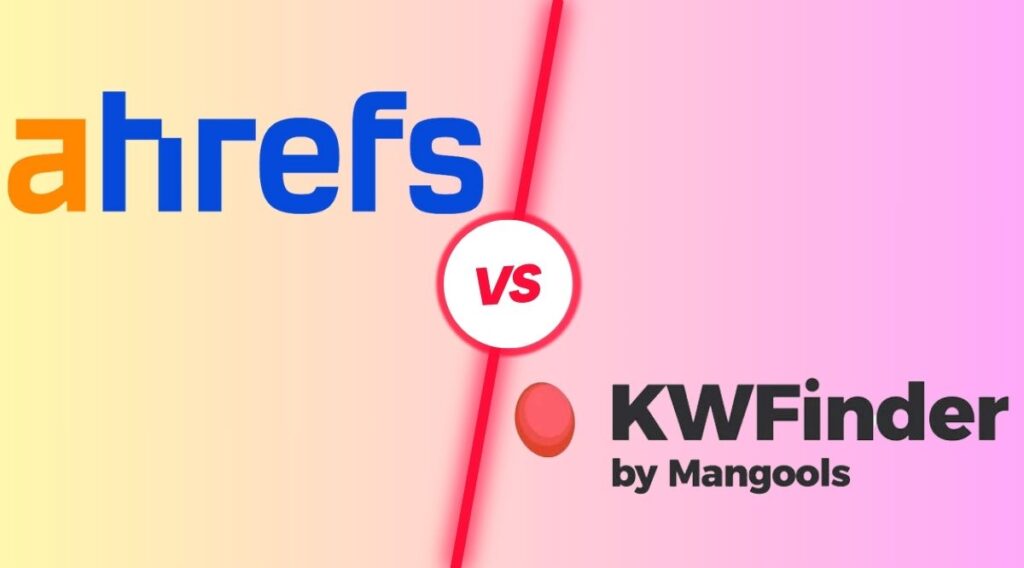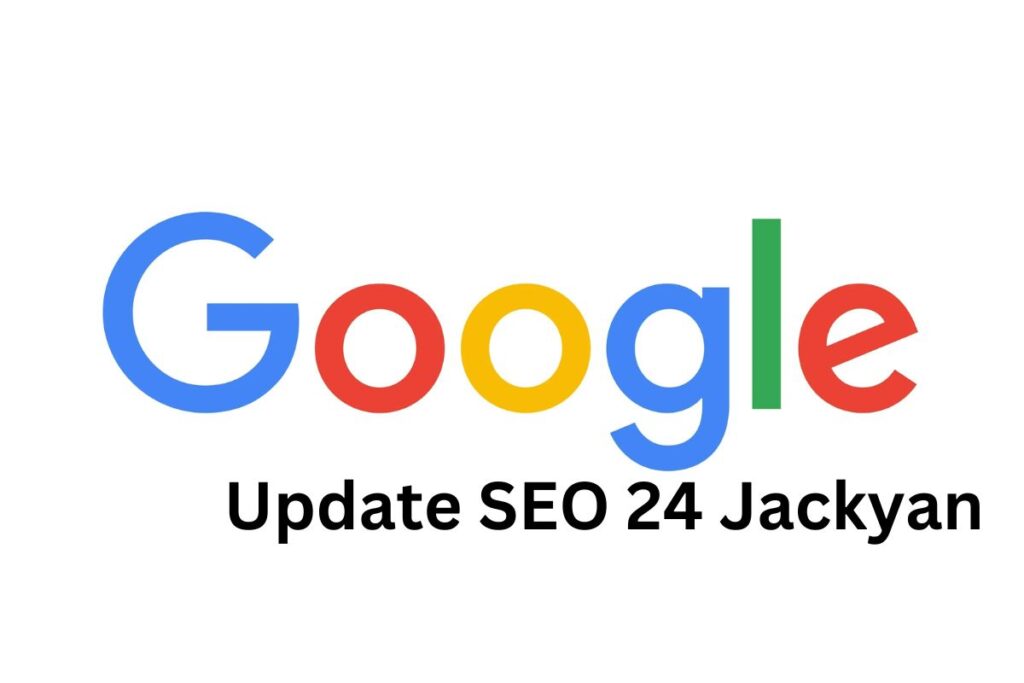In the dynamic landscape of digital marketing, the choice of Low vs High Context Marketing Strategies plays a pivotal role in determining the success of a marketing campaign. As we delve into the intricacies of these two approaches, it becomes evident that the right communication strategy can significantly impact customer engagement, brand perception, and, ultimately, conversion rates.
Definition of Low and High Context Communication
Deciphering Low Context Communication
Low-context communication is a communication style where the message is explicit and direct and relies heavily on words to convey meaning. In low-context cultures, such as those in Western societies, information is clear, concise, and readily available. The emphasis is on the spoken or written word, and individuals expect transparency and straightforwardness in communication.
Unveiling High Context Communication
Conversely, high-context communication relies on implicit cues, non-verbal elements, and shared cultural understanding to convey meaning. In high-context cultures, such as those in Asia and the Middle East, communication is nuanced, and individuals often rely on context, relationships, and non-verbal cues to interpret messages accurately.
Understanding Low-Context Communication
Low-context communication is a communication style that places a significant emphasis on explicit verbal expression. In contrast to high-context communication, where much of the meaning is implicit and context-dependent, low-context communication relies on direct and clear language to convey messages. This communication style is prevalent in societies where shared cultural backgrounds are less pronounced, necessitating clarity to avoid misunderstandings.
The Dynamics of Contextual Relevance
In a world bombarded with information, grabbing the attention of the target audience is no easy feat. It is where contextual relevance plays a pivotal role. Imagine a scenario where an individual searching for fitness tips stumbles upon an advertisement for high-end gourmet cooking utensils. The lack of alignment between the user’s intent and the content presented results in a lost opportunity for the marketer. Understanding the dynamics of contextual relevance involves aligning marketing efforts with the user’s intent, preferences, and the specific context of their interaction. It not only increases the likelihood of engagement but also establishes a deeper connection between the brand and the consumer.
Key Characteristics of Low-Context Communication
Explicit Verbal Expression
At the core of low-context communication is the reliance on explicit verbal expression. Messages are conveyed directly, with minimal reliance on nonverbal cues or contextual elements. This explicitness aims to leave little room for ambiguity, ensuring that the intended meaning is conveyed without the need for intricate interpretation.
Independence of Context
Unlike high-context communication, which draws heavily from the surrounding environment and shared cultural knowledge, low-context communication thrives independently of context. The message is crafted to be understood without a deep reliance on background information, making it more accessible in diverse and multicultural settings.
Clarity and Precision
Clarity is the hallmark of low-context communication. Precision in language choice is essential to convey the intended message accurately. This characteristic becomes particularly crucial in professional settings, where ambiguity can lead to misunderstandings and hinder effective collaboration.
Emphasis on Individualism
Low-context communication often places a higher value on individualism. In societies where personal autonomy and independence are prized, messages are tailored to respect individual perspectives, fostering a sense of personal agency in understanding and responding to information.
Limited Nonverbal Cues
While nonverbal cues play a significant role in communication, low-context communication tends to rely less on them. Verbal expression takes precedence, reducing the importance of subtle gestures or unspoken signals in conveying meaning. This characteristic enhances cross-cultural communication, as it minimizes the reliance on culturally specific nonverbal cues.
Applicability in Global Settings
One of the most notable aspects of low-context communication is its adaptability to global settings. In a world where diversity is celebrated, the explicit and independent nature of low-context communication transcends cultural boundaries, making it a valuable tool in international business, diplomacy, and collaboration.
Real-Life Examples of Low-Context Marketing
Apple’s Timeless Simplicity
Apple is a prime example of a brand that has mastered the art of low-context marketing. From its product designs to its advertising campaigns, Apple prioritizes simplicity and clarity. The iconic tagline “Think Different” encapsulates their low context approach, resonating with a global audience irrespective of cultural background.
Google’s Universal Accessibility
Google, a multinational tech giant, employs low-context marketing effectively in its user interfaces. The minimalist design of its search engine and applications, combined with straightforward language, ensures that users worldwide can navigate and engage with their products seamlessly.
Coca-Cola’s Inclusive Celebrations
Coca-Cola has consistently embraced low-context marketing in its global campaigns. For instance, their “Share a Coke” campaign transcends language barriers by featuring universal images of people sharing moments of joy while enjoying Coca-Cola. This approach has enabled the brand to connect with consumers across diverse cultures.
SEO-Friendly Tips for Low-Context Marketing
- Keyword Optimization: Incorporate relevant keywords strategically within your low-context content to enhance search engine visibility.
- User-Focused Content: Consider the end user when creating material. Please make it a priority to give a varied audience readily assimilated, meaningful information.
- Mobile Optimization: As mobile usage continues to rise globally, ensure that your low-context content is optimized for mobile devices to reach a broader audience.
The Pros Unveiled
Global Reach with Simplicity
Low-context marketing serves as a universal language, transcending cultural and linguistic barriers. By employing unambiguous communication, your message becomes accessible to a global audience. This simplicity not only widens your reach but also fosters inclusivity, making your brand relatable to diverse demographics.
Enhanced Audience Engagement
In a world bombarded with information, capturing and retaining audience attention is a significant challenge. Low-context marketing thrives in this scenario by providing information succinctly. This approach respects the audience’s time, leading to heightened engagement and a greater likelihood of conversion.
Reduced Miscommunication Risks
Complex and ambiguous messages often lead to misunderstandings. Low-context marketing mitigates this risk by straightforwardly presenting information. The reduction in miscommunication fosters trust and credibility, critical elements for building lasting relationships with your audience.
Adaptability in Dynamic Markets
Markets are dynamic, and trends evolve rapidly. Low Context Marketing’s straightforward approach allows businesses to adapt swiftly to changing market conditions. This agility is a valuable asset in navigating the ever-shifting landscape of consumer preferences and industry trends.
Data-Driven Decision Making
Clarity in communication extends beyond the audience – it also benefits internal processes. Low Context Marketing facilitates better communication within teams, leading to more effective collaboration. It, in turn, supports data-driven decision-making, empowering businesses to make informed choices based on accurate and understandable information.
Cost-Efficiency in Campaigns
Complex marketing campaigns often require extensive resources for explanation and clarification. Low-context marketing simplifies the process, reducing the need for additional resources. This inherent efficiency makes campaigns more cost-effective, ensuring that businesses get more value from their marketing investments.
Building a Strong Brand Identity
Consistency in communication is key to building a strong brand identity. Low Context Marketing’s straightforward approach helps maintain consistency across all touchpoints, reinforcing your brand’s image in the minds of consumers. A clear and cohesive identity fosters brand loyalty and trust.
Cons of Low Context Marketing
Beneath the surface lies a set of cons that may not be immediately apparent. Let’s explore these pitfalls to make informed decisions when crafting your marketing strategy.
Lack of Personalization
One of the primary drawbacks of low-context marketing is its limited capacity for personalization. The direct and explicit nature of the message may overlook the diverse needs and preferences of individual consumers. In an era where personalization is a key driver of customer engagement, a one-size-fits-all approach can lead to missed opportunities and decreased customer satisfaction.
Cultural Insensitivity
In a globalized world, businesses operate in diverse cultural landscapes. Low-context marketing, with its reliance on explicit messaging, may inadvertently overlook cultural nuances. What resonates with one audience might not necessarily strike a chord with another. Ignoring these cultural subtleties can lead to misinterpretation, causing reputational damage and hindering market expansion efforts.
Reduced Emotional Appeal
Marketing is not just about conveying information; it’s about evoking emotions and creating connections. Low-context marketing, by its nature, tends to focus on facts and features, often neglecting the emotional aspect. In an era where emotional engagement drives brand loyalty, a lack of emotional appeal can result in a disconnection between the brand and its audience.
Missed Opportunities for Storytelling
Storytelling is a powerful tool in marketing, enabling brands to create narratives that resonate with their audience. Unfortunately, low-context marketing may overlook the potential for storytelling. By prioritizing explicit messaging over narrative development, brands miss out on the opportunity to create a compelling and memorable brand story.
Inability to Adapt to Trends
The digital landscape is dynamic, with trends and preferences evolving rapidly. Low-context marketing, with its rigid and straightforward approach, may struggle to adapt to these changes. A failure to stay attuned to the latest trends can result in outdated and ineffective marketing strategies.
Understanding High Context Marketing
To embark on this journey, we must first grasp the concept of high-context communication. In contrast to its counterpart, low-context communication, high-context relies on subtle cues, non-verbal cues, and shared experiences. It emphasizes the importance of context and relationships in conveying messages. Think of it as the difference between reading a straightforward email and engaging in a face-to-face conversation laden with unspoken understandings.
The Power of Subtlety
High-context marketing operates on the principle that less can be more. Instead of bombarding consumers with explicit messages, it taps into the power of subtlety. Brands communicate not just through words but through imagery, symbols, and cultural references that resonate with their target audience. It creates a deeper, more meaningful connection that goes beyond the surface.
Decoding High-Context Marketing
What is High-Context Marketing?
High-context marketing refers to a strategic approach that relies heavily on shared cultural knowledge, subtle cues, and contextual elements to convey messages. Unlike its counterpart, low-context marketing, which is more explicit and straightforward, high-context marketing thrives on the unspoken, tapping into the emotions, values, and shared experiences of the target audience.
Building Relationships Through Storytelling
One of the hallmark characteristics of high-context marketing is its emphasis on storytelling. Brands employing this approach craft narratives that resonate with their audience, creating a sense of connection and shared identity. These stories transcend mere product features, establishing an emotional bond that goes beyond transactions.
Cultural Sensitivity as a Cornerstone
In the realm of high-context marketing, cultural sensitivity is not just a desirable trait but a fundamental necessity. Brands need to navigate the diverse cultural landscapes of their audience, understanding nuances, traditions, and values to tailor their messages effectively. This approach fosters a sense of inclusivity, making the brand relatable to a wide array of consumers.
The Power of Visual Communication
High-context marketing recognizes the potency of visual elements in conveying messages. Images, symbols, and aesthetics play a pivotal role in complementing the narrative, creating a multi-sensory experience for the audience. The adage, “A picture is worth a thousand words,” holds particularly true in the high-context marketing arena.
Real-World Examples of High-Context Marketing
Airbnb: Embracing Cultural Diversity
Airbnb is a prime example of a brand that excels in high-context marketing. Their platform caters to a global audience with diverse cultural backgrounds. Airbnb’s marketing campaigns focus on showcasing the uniqueness of accommodations, embracing the local culture, and emphasizing the personalized experience of each guest.
Coca-Cola: Celebrating Special Moments
Coca-Cola’s marketing strategies often revolve around celebrating special moments and occasions. By creating emotionally resonant ads that tap into the cultural context of festivities and celebrations, Coca-Cola has successfully embedded its brand in the fabric of these shared experiences.
Nike: Empowering through Storytelling
Nike’s high-context marketing revolves around empowering stories that transcend geographical boundaries. Their campaigns often feature narratives that resonate with various cultures, emphasizing the universal themes of determination, perseverance, and triumph.
Why High-Context Marketing Matters
Establishing Trust and Loyalty
Trust is the bedrock of any successful brand-consumer relationship. High-context marketing transcends the transactional element by focusing on shared experiences and emotions, which promotes trust and creates enduring relationships. In a saturated market, trust can be the differentiator that sets a brand apart.
Adapting to Diverse Audiences
In an era of global connectivity, brands are no longer confined by geographical boundaries. High-context marketing enables businesses to transcend cultural differences, allowing them to resonate with diverse audiences. This adaptability is crucial in a world where consumers seek authenticity and cultural relevance in the brands they engage with.
Enhancing Engagement and Interactivity
High-context marketing doesn’t just speak to the audience; it invites them to participate in the narrative. Whether through interactive campaigns, user-generated content, or immersive experiences, this approach turns consumers into active participants, fostering a sense of belonging and community around the brand.
Benefits of Transitioning to High-Context Marketing
Cultivating Emotional Connections
High-context marketing is a potent tool for cultivating emotional connections with your audience. By tapping into shared experiences and cultural nuances, brands can evoke emotions that resonate on a personal level. This emotional resonance fosters brand loyalty and advocacy.
Global Appeal
In an interconnected world, businesses often operate on a global scale. High-context marketing allows brands to transcend language barriers. Instead of relying solely on words, they communicate through universally understood symbols and emotions, making their message accessible to diverse audiences.
Increased Engagement
The subtlety of high-context marketing encourages curiosity and engagement. Consumers are more likely to spend time decoding implicit messages, fostering a sense of involvement. This increased engagement can translate into higher conversion rates and a more loyal customer base.
Implementing High-Context Marketing Strategies
Now that we appreciate the merits of high-context marketing, how can businesses effectively implement this strategy?
Know Your Audience
Understanding your audience is paramount. Conduct thorough research to identify the cultural, social, and emotional factors that influence their decision-making. Tailor your messages to resonate with their unique context.
Utilize Visual Storytelling
High-context marketing thrives on visual storytelling—leveraging images, videos, and symbols that carry cultural significance. Ensure your visuals align with the emotional tone you wish to convey.
Embrace Nuanced Language
Words matter, but so does the way you use them. Embrace nuanced language that appeals to the emotions of your audience. Avoid generic phrases and aim for a more personalized communication style.
Pros of High Context Marketing
Building Authentic Connections
One of the primary benefits of high-context marketing is its ability to foster authentic connections with your audience. By understanding the cultural context of your target market, you can create content that resonates on a deeper level. This authenticity builds trust, a fundamental element in cultivating long-lasting relationships with your customers.
Enhanced Engagement
High-context marketing is a two-way street. It encourages meaningful interactions between the brand and its audience. Through tailored content that reflects the audience’s values, you can stimulate engagement and encourage participation. This engagement is not just about likes and shares; it’s about creating a community around your brand.
Increased Brand Loyalty
When consumers feel a genuine connection with a brand, loyalty follows naturally. High-context marketing establishes a strong emotional bond, making customers more likely to stick with your brand over the long term. Loyal customers not only make repeat purchases but also become brand advocates, spreading positive word-of-mouth.
Effective Storytelling
Storytelling is a powerful tool in marketing, and high-context marketing takes it to the next level. By embedding your brand narrative within the cultural fabric of your audience, you create stories that resonate deeply. These stories become memorable, making your brand stand out in the crowded digital landscape.
Adaptability Across Cultures
In today’s globalized world, businesses often operate in diverse cultural settings. High-context marketing allows for adaptability, enabling brands to navigate different cultural landscapes seamlessly. Whether you are targeting local markets or a global audience, this approach ensures that your message remains relevant and impactful.
Optimized User Experience
Understanding the high context of your audience extends beyond content creation. It encompasses the entire user experience. By tailoring your website, app, or other digital touchpoints to align with the cultural preferences of your audience, you enhance the overall user experience. This optimization can lead to higher conversion rates and customer satisfaction.
Striking the Balance
Keyword Research and User Intent
Start by conducting in-depth keyword research to identify the terms relevant to your business. However, don’t stop there. Dive deeper into understanding the user intent behind those keywords. What questions are your potential customers asking? What problems are they trying to solve? Tailoring your content to address these questions ensures a more meaningful connection with your audience.
Quality Content is King
In the era of Hybrid Context Marketing, content remains the cornerstone of success. Crafting high-quality, engaging content that seamlessly incorporates your target keywords is crucial. Gone are the days of generic, keyword-stuffed articles. Instead, focus on creating content that adds value, educates, and entertains your audience.
Contextual Relevance
While keywords are essential, context is king. Ensure that your content is not just a collection of keywords but provides a cohesive narrative. Understand the context in which your audience consumes information and tailor your content accordingly. It could involve storytelling, addressing pain points, or showcasing real-world applications of your products or services.
Conclusion
In the clash of Low vs High Context Marketing Strategies, the key lies in understanding your audience and delivering messages that resonate with them. Whether you opt for the precision of low context or the nuanced storytelling of high context, integrating SEO best practices will undoubtedly elevate your content’s visibility and impact. Remember, the journey doesn’t end with crafting your marketing strategy. Regularly evaluate and adapt to the ever-changing digital landscape, staying ahead of the curve. By seamlessly blending contextual strategies with SEO mastery, you position your brand for sustained success in the competitive online arena.
Frequently Asked Questions (FAQs)
Are Low Context Strategies Suitable for Niche Markets?
Absolutely! Low context strategies provide clarity, making them ideal for niche markets where precise communication is paramount.
How Can Context Marketing Enhance Customer Loyalty?
High-context marketing fosters emotional connections, cultivating lasting relationships with customers. By immersing them in rich experiences, brand loyalty is naturally enhanced.
Is High Context Marketing More Time-Consuming Than Low Context?
While high-context marketing may require more intricate planning, the investment in time often yields a deeper and more lasting impact on the audience.
Can Context Marketing Be Personalized?
Indeed, low-context marketing allows for personalized communication, catering to individual preferences and demographics.
What Challenges Do Businesses Face in Implementing High Context Marketing?
The main challenges lie in striking the right balance between subtlety and clarity, ensuring the message resonates without becoming obscure.
Is It Possible to Combine Low and High Context Strategies?
Absolutely. Many successful campaigns incorporate elements of both low and high-context strategies, striking a delicate balance to appeal to diverse audience segments.



































